Beer is widely considered the most complex fermented beverage in the world. Its flavor, color, mouthfeel, and strength can vary in more ways than any other craft drink. Beer uses a greater array of ingredients, which creates complexities beyond the reach of distilled spirits, wine, cider, mead and others. The level of precision involved in its creation walks a much tighter line. All of this leads us to the reason why WE LOVE BEER. It is both an expression of artistry and a measure of scientific prowess. To master both is a triumph like none other. With that, let's get a acquainted with the fundamentals of beer production!

MILLING
The process of brewing all begins (in the brewery) with crushing whole grain malt with a mill. Generally speaking, barley is the most common malt used in a craft brewery. Wheat and rye are two other common malted grains used as well. Milling the malt to be used in a particular recipe is of importance because the process creates the necessary surface area on the malted grain's endosperm. The next process, mashing, will explain why this such a crucial step!
MASHING
Once milling is complete, mashing begins. This is the process of mixing the crushed malt with very hot water. Think of making oatmeal! Generally speaking the water temperature will range from about 144-158 Fahrenheit. During this stage the designation of "malted" grain as opposed to "unmalted" grain becomes important. Malted grain has gone through a controlled germination stage that breaks the endosperm down and creates enzymes. When subjected to hot water of a very specific temperature, those enzymes become active. When active, they convert the readily available starches in the malt into sugars (maltose) and dextrins (think mouthfeel). This then becomes the body of the beer! The mash will take between 30-120 minutes or more, depending on the temperature and type of enzyme working. Once complete, the liquid is separated from the now spent grain and transferred to the boil kettle. The spent grain is then given to a local farmer to use as livestock feed! (Dont worry, there is no alcohol yet).
BOILING
Once the boil kettle is full of this sugary liquid, known as wort (pronounced wert), it is brought to a boil. The process of boiling the wort is responsible for two main things. The first is to pasteurize the wort. The second is to add hops, or other flavors such as ginger or molasses. The longer the hops are boiled in the wort will increase the perceived bitterness in the final product. Conversely, if hops are only added at the very end of the boiling process they will be perceived as less bitter and more flavorful. Typically wort is boiled for 60-90 minutes.
FERMENTATION
After boiling is complete, it is time to move the wort into a fermenter and pitch brewers yeast into it! First, the wort must be cooled. Yeast is a living organism, and it is very picky about the temperature of the environment that it lives in. So as the wort is transferred into a fermenter it is passed through a heat exchanger. This process allows for controlled cooling to a specific temperature (usually 60-70 Fahrenheit for ales). Once the transfer is complete, yeast is pitched into the fermenter. Over the next 4-6 days the yeast will consume all of the sugars that were created in the mash and turn them into alcohol and carbon dioxide. When fermentation is determined to be complete, the now "beer" will be cooled again for conditioning. This time to 30 degrees Fahrenheit. This process supports yeast flocculation, or settling, to the bottom of the fermentation tank. This is done to help clarify the beer, and collect the yeast for re-use in the next beer.
RACKING
At the end of the conditioning phase the beer will either be filtered or directly transferred into what is called a "Bright Tank". This is where the beer is carbonated and kept for either kegging, bottling, or canning. Barrels are also used for aging! The beer is measured for accurate carbonation and then put into the appropriate package. For Aslan Brewing Company that is kegs and cans. At this point, the whole process has realized the production process from malt to beer. For small brewing factories, it can be stored in fermentation tanks or bright tanks waiting for sale. If the output is large and there are plans for export, Then it can be filtered, filled, and sterilized to extend the shelf life of beer.
DISTRIBUTION
Now that the beer is ready to be consumed it is sent out into the world! It is either sold to bars and restaurants or grocery and convenience stores. The whole process takes about two weeks for an ale and six weeks or more for a lager.

Commercial beer equipment is at the heart of the modern brewing industry. This article will look at 2000 liter commercial beer equipment, a moderately sized brewing system suitable for small to medium sized bars, restaurants and breweries. We'll learn about its key components, operational processes, and the business considerations associated with them.
More >>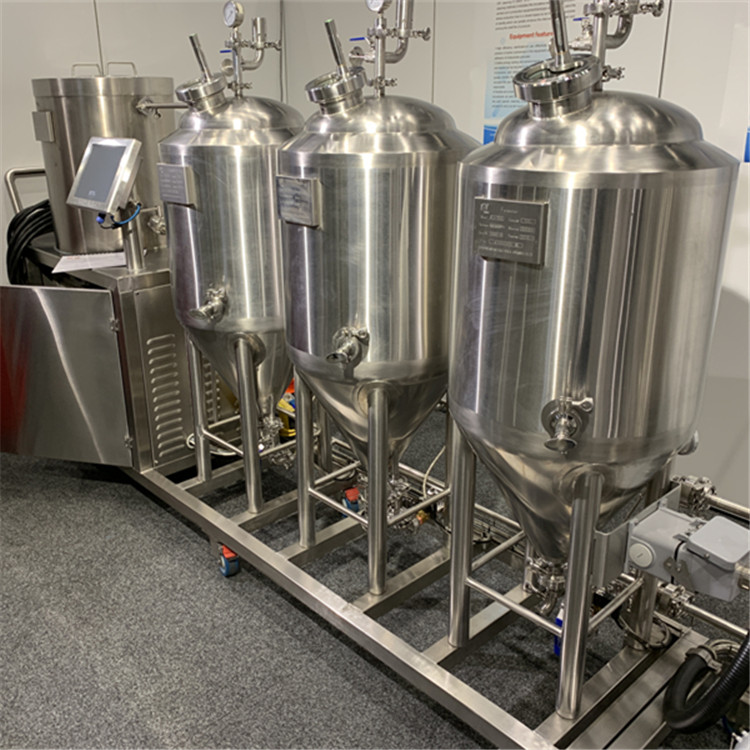
Brewing system: The Restaurant Nano Brewery Equipment brewing system is the heart of any brewery, and a nano brewery is no exception. Restaurant Nano Brewery Equipment typically consists of a mash tun, brew kettle, and fermenter. The size of the brewing system will depend on the amount of beer you plan to brew, but for a restaurant nano brewery, a 1- or 2-barrel system is common.
More >>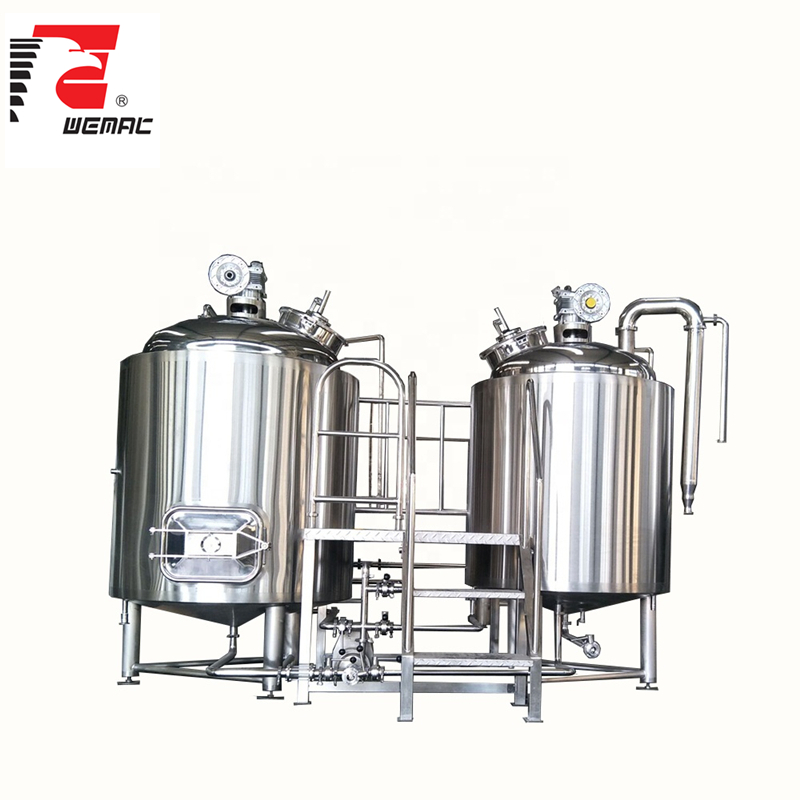
Craft brewery equipment is widely used in medium breweries and beer pubs. It can brew pale lager, amber lager, dark lager, ale and etc at proper temperature with different raw material.
More >>668.jpg)
A complete set of 500L beer equipment consists of malt crushing system, saccharification system, fermentation system, steam system, refrigeration system, CIP cleaning system, pipeline system, etc. 500L brewing beer equipment is generally used in commercial, restaurants, bars, barbecue shops and other places.
More >>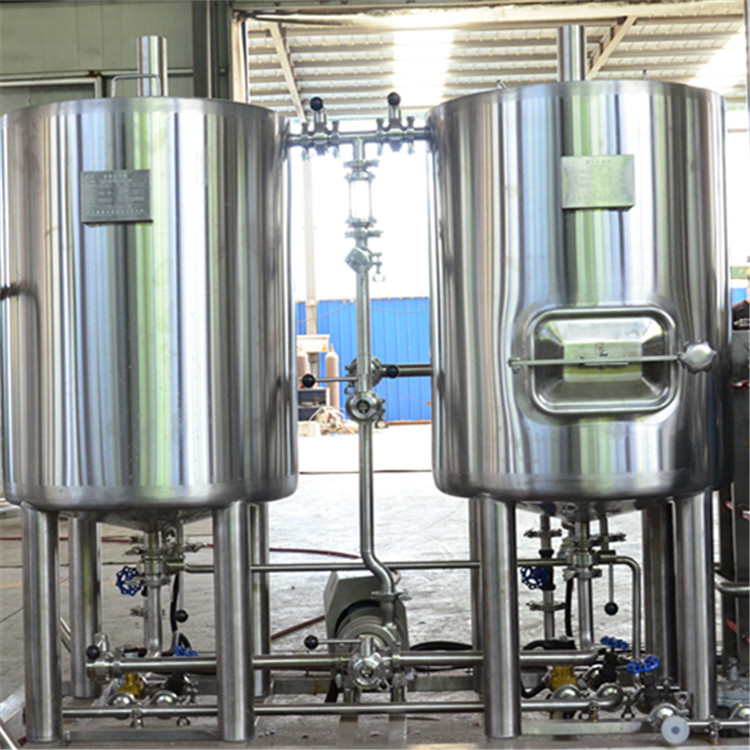
100L beer equipment can be used in home brewing and business. Each batch can produce 100L beer, and two batches can be made every day, up to 200L beer. If you are at home, you can produce beer every few days. If it is commercial, first of all, it is necessary to determine how many liters of beer are produced a day. The 100L beer equipment can produce up to three batches a day, but considering the labor intensity, it can produce up to one or two batches a day. The number of fermentation tanks is determined according to the amount of beer produced.
More >>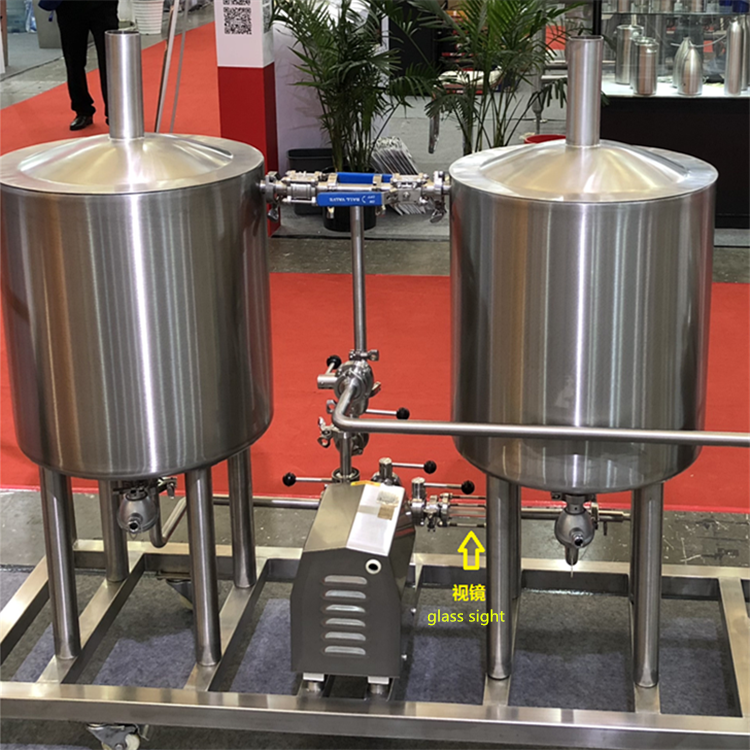
Small beer equipment is generally divided into two types, one is small household simple equipment, and the other is commercial beer equipment. Small household simple equipment generally refers to 30l-100l, with small floor area, convenient operation and relatively simple technology. Commercial beer equipment generally refers to 300l-2000l beer equipment. Now the popular fine brewing beer equipment in the market is made with this equipment.
More >>
The 100L micro beer equipment belongs to a small beer brewing system. Small space, high degree of automation, simple and easy to operate. The mash process is electric heating, which is generally equipped with two device specifications (mashing+lautering + boiling+whirlpool), with ice water tank, plate heat exchanger, wort oxygenator, wort pump, etc; The fermentation process is automatically controlled by PLC, and 6 fermentation tanks are generally configured according to the standard. It belongs to self entertainment beer brewing equipment.
More >>
If you are planning to build a brewery, you must consider the turnkey beer project. What is the whole turnkey beer production line like? Which manufacturers can do a good job in this beer production line? What problems should we pay attention to? The beginning of a new project certainly requires a lot of preparatory work and a lot of problems. Many times, it is very difficult. This professional problem should be solved by a professional company. We can provide you with the turnkey work of the whole beer project, with more than 60 years of production experience.
More >>
As a popular drink, more and more people like to brew beer. How is beer brewed? According to beer concentration, it is divided into high concentration beer, medium concentration beer and low concentration beer. According to the production mode, it is divided into: fresh beer, pure draft beer and cooked beer. No matter what kind of beer, the beer brewing system is divided into: malt crushing system, saccharification system, fermentation system, CIP cleaning system, refrigeration system, control system, filling system and water treatment system.
More >>
As one of the oldest beverages in the world, beer has a history of 4000-5000 years. It uses malt as the main raw material, adds hops, and is brewed by yeast. Craft beer is actually an innovation movement in the beer industry. Behind it is the rise of the young consumers born in the 80s and 90s. They have higher requirements for consumer experience, personalization and diversification.
More >>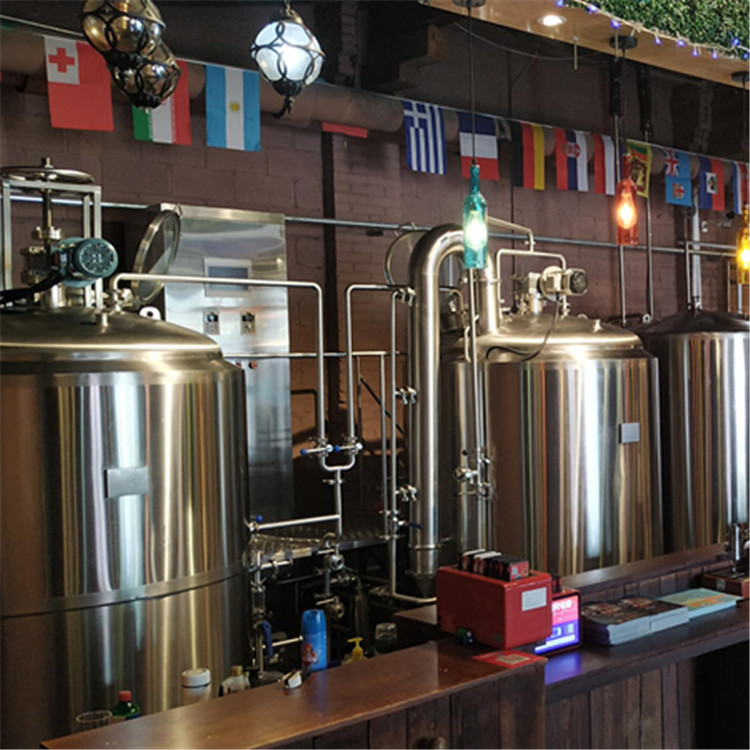
For beer equipment, each customer has different requirements. We have talked about what equipment beer equipment needs, how to choose beer equipment, and what is the most suitable scheme? According to the different needs of each customer, today we will talk about the additional configuration of beer equipment, so that we can use it better and more conveniently to brew higher quality beer.
More >>
As the core of the whole beer equipment, saccharification system is the key to brewing beer, so how to choose the saccharification system suitable for you? As we all know, the saccharification system is divided into four steps: saccharification - Filtration - boiling - spin sedimentation. In order to achieve the desired effect in each step and save cost, the combination of saccharification system is very key.
More >>